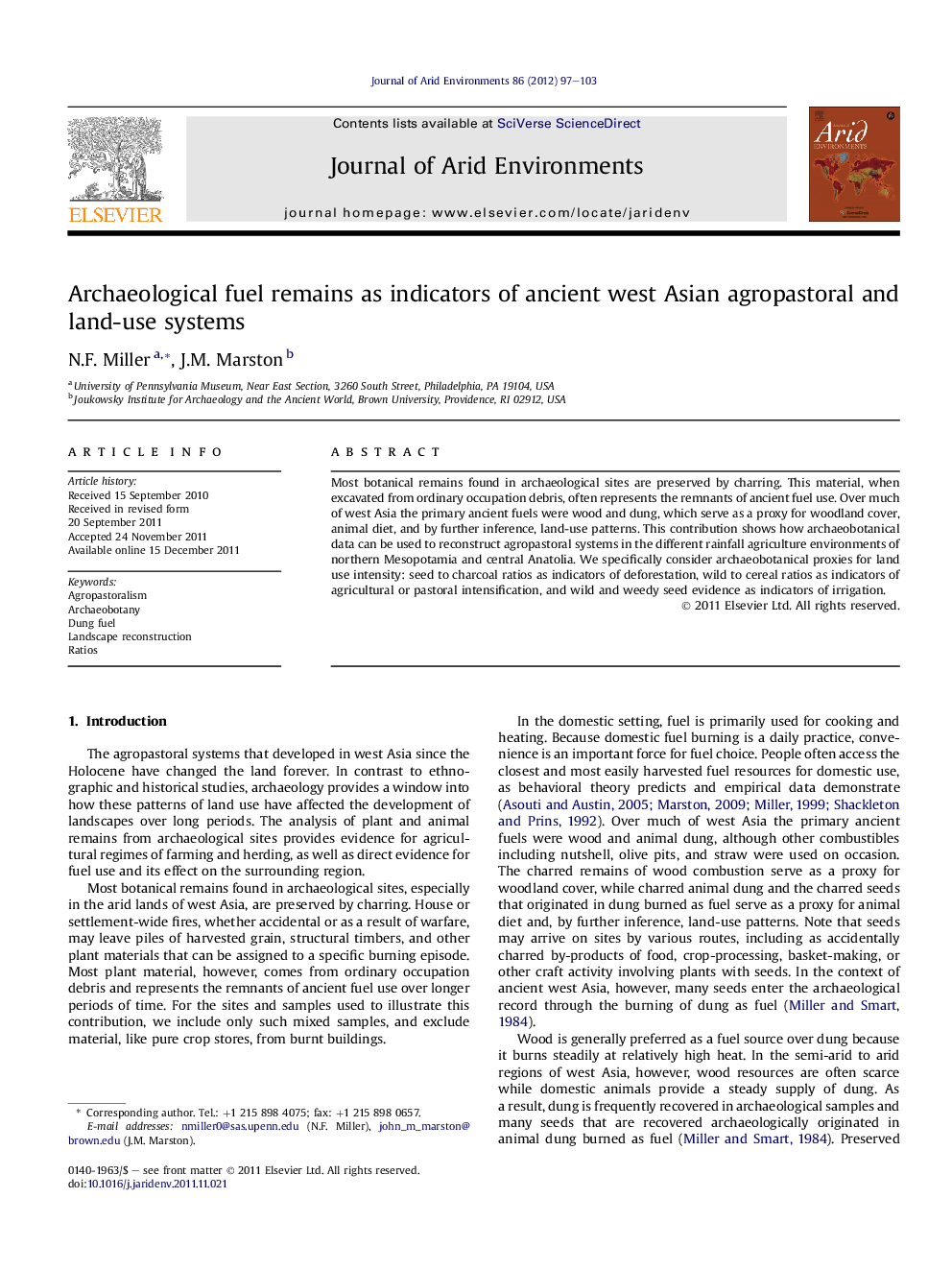| Article ID | Journal | Published Year | Pages | File Type |
|---|---|---|---|---|
| 4393250 | Journal of Arid Environments | 2012 | 7 Pages |
Most botanical remains found in archaeological sites are preserved by charring. This material, when excavated from ordinary occupation debris, often represents the remnants of ancient fuel use. Over much of west Asia the primary ancient fuels were wood and dung, which serve as a proxy for woodland cover, animal diet, and by further inference, land-use patterns. This contribution shows how archaeobotanical data can be used to reconstruct agropastoral systems in the different rainfall agriculture environments of northern Mesopotamia and central Anatolia. We specifically consider archaeobotanical proxies for land use intensity: seed to charcoal ratios as indicators of deforestation, wild to cereal ratios as indicators of agricultural or pastoral intensification, and wild and weedy seed evidence as indicators of irrigation.
► Dung fuel becomes increasingly important relative to wood as one moves from wet areas to dry areas. ► Deforestation is commonly accompanied by an increase in dung fuel use. ► Archaeobotanical indicators of grazing are associated with drier climates and caprine herding. ► Archaeobotanical indicators of dry-farming are associated with moister climates and cattle and pig husbandry. ► Summer irrigated crops do not become common until the Medieval period, although irrigation has long been practiced.
